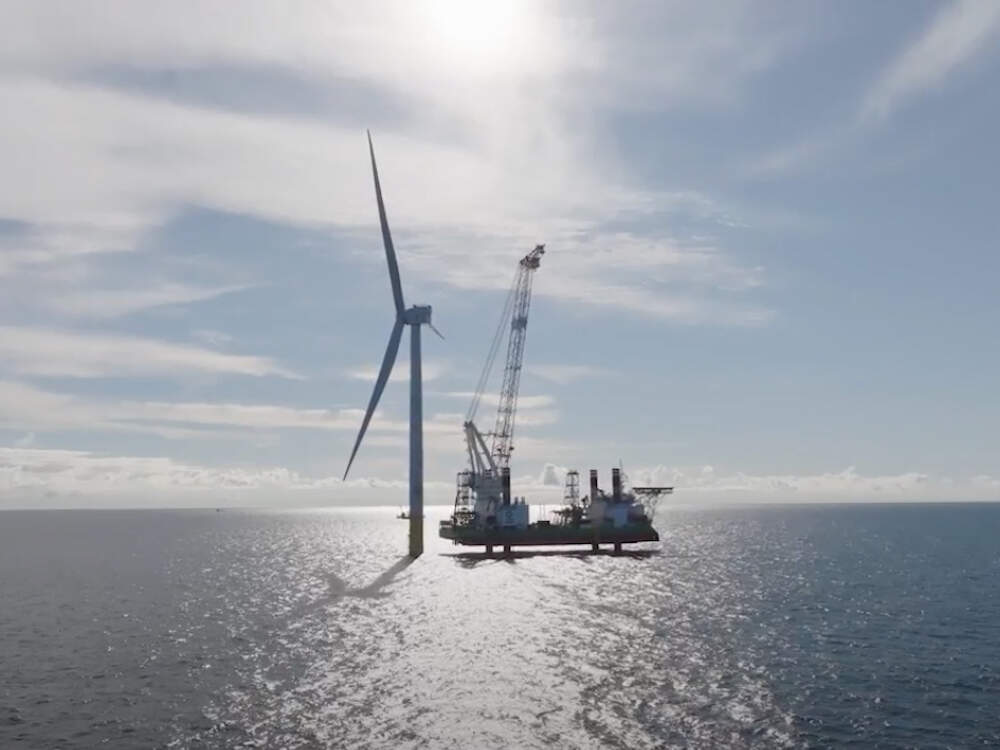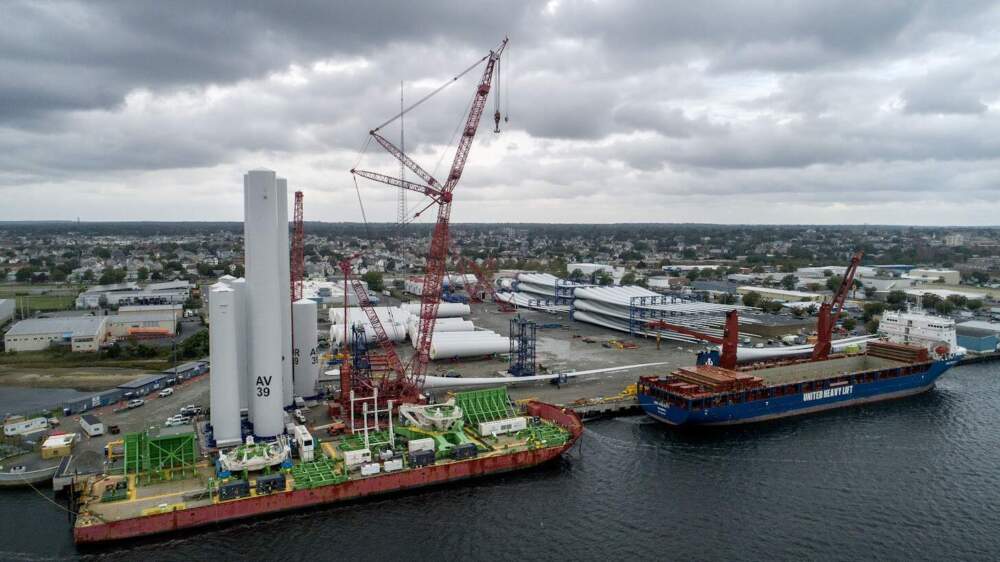Advertisement
Vineyard Wind officially has 5 turbines up and running

If you flip on a light switch in Massachusetts right now, there’s a chance that some of the electrons are coming from the state’s first offshore wind project, Vineyard Wind.
While power has been flowing intermittently from the project into the New England grid since early January, its developers announced Thursday that five turbines are fully commissioned and up and running. Together, these turbines can generate 68 megawatts of clean electricity, which is enough to power 30,000 homes and businesses.
“This marks a turning point in the clean energy transition,” Gov. Maura Healey said in a statement. “After many decades of advocacy, research, policymaking, and finally construction, America’s offshore wind industry has gone from a dream to reality.”
The Vineyard Wind project, which is located about 15 miles off of Martha’s Vineyard, is the first large-scale offshore wind project in Massachusetts — and the country. It’s still under construction, but when it’s finished, its 62 massive turbines will be capable of producing 800 megawatts of electricity to power the equivalent of 400,000 homes in Massachusetts.
“Every time we put another turbine online, every time it’s spinning and generating clean energy, we're taking tangible steps to address climate change,” said Ken Kimmell, chief development officer at Avangrid, which is co-developing the wind farm with Copenhagen Infrastructure Partners.
“We have more turbines that are being installed as we speak,” he added. “And as those go through the commissioning process, we’ll be [generating] more clean energy for Massachusetts.”
In addition to the five operating turbines, Vineyard Wind has completed construction on four others. A tenth turbine is being installed now and the parts for the 11th turbine will soon be sent on a large boat from New Bedford to the project site. According to a company spokesperson, Vineyard Wind installed 47 monopiles — the turbine foundations that get pounded into the ocean floor — before it had to pause this loud construction activity for a few months to help safeguard endangered North Atlantic right whales.
Vineyard Wind has previously said it’s aiming to finish construction sometime in late 2024. Kimmell confirmed that this is still the target, but added that “it could take a little longer.” Offshore construction is highly susceptible to weather-related delays and, as with many new industries, there are steep learning curves.
“We're being cautious and careful about commissioning and making sure everything's done the right way,” he said. “We're not going to rush to hit that hit that target, but we're doing it as fast as we can.”

In many ways, the Vineyard Wind project — and another smaller project off of Long Island — stand out as success stories in an industry that has otherwise seen a lot of uncertainty and chaos in the last year.
Thanks to a combination of rising interest rates, inflation and global supply chain issues, the developers of several projects along the East Coast, including two in Massachusetts, have said projects they previously agreed to build were no longer feasible at the prices they negotiated. One developer outright canceled a large project in New York.
Still, many environmentalists, offshore wind developers and industry watchers are adamant that the nascent industry still has a bright future in the U.S. And on the east coast, where offshore wind is the linchpin of many states’ climate and clean energy goals, officials are also publicly bullish.
“It’s not easy to stand up a new industry, but we will continue to forge ahead and keep growing the industry,” Rebecca Tepper, the state’s Energy and Environmental Affairs secretary, said in a statement.
The Healey administration frequently touts its investments in offshore wind, noting that the industry can help generate much-needed clean electricity, slash carbon emissions, improve air quality and create a lot of good-paying jobs.
Vineyard Wind, for instance, is expected to create over 3,000 jobs, save customers $1.4 billion in utility bills and prevent 1.6 million metric tons of carbon dioxide from entering the atmosphere every year. (This is the equivalent of getting 325,000 cars off the road annually.)
Massachusetts is in the process of holding its fourth competitive offshore wind solicitation. The state is looking to sign contracts for up to 3,600 megawatts of power, which represents about a quarter of Massachusetts annual electricity demand. Projects bids are due later this spring.
